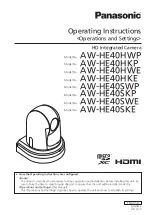
or
Panorama
—For grand landscapes or group pictures where you need to
capture a wide shot that one image cannot capture (see
Action
—For capturing sporting events, moving cars, or any scene where you
want to stop the action.
Night Portrait
—For capturing images of people at night. This mode uses the
flash and a long exposure. As a result, you must set the camera on a tripod
or stable surface.
Night Scenery
—For capturing night scenes. This mode uses a long exposure
with no flash. As a result, you must set the camera on a tripod or stable surface.
Beach
—For capturing scenes at the beach.
Snow
—For capturing scenes in snow.
Sunset
—For capturing outdoor scenes at sunset.
Document
—For capturing flat, textual, or graphical pieces.
Note
The shooting modes do not apply when you are recording video clips.
The shooting mode remains in effect until it is changed again, or until you turn off the
camera.
Using Panorama mode
Panorama
mode allows you to take a sequence of 2 to 5 pictures that can be stitched
together to capture a scene too wide to fit into a single picture. To stitch your panoramic
sequence together, use
Stitch Panorama
on the camera (see
). Depending on the HP Photosmart Software version you installed
(see
About the HP Photosmart Software
), you can also stitch panoramas
automatically as you transfer them to your computer.
1.
While in
Live View
, press
, use
to select either
Panorama
(left to right)
or
Panorama
(right to left), then press
.
2.
Press the
Shutter
button to take the first picture in the panoramic sequence.
3.
Position the camera to take the second picture.
Use the transparent overlay of the first image
superimposed on one third of the
Live View
screen
to align your second picture with the first.
4.
Press the
Shutter
button to take the second
picture.
5.
Continue adding more pictures to the panorama,
or press
to end the panoramic sequence.
During
Instant Review
(see
), each image in the panoramic sequence is displayed. When the last image
(continued)
HP Photosmart R725/R727 Digital Camera
17
















































